
Gary Anthony James Webb, known professionally as Gary Numan, is an English musician. He entered the music industry as frontman of the new wave band Tubeway Army. After releasing two studio albums with the band, he released his debut solo studio album The Pleasure Principle in 1979, topping the UK Albums Chart. His commercial popularity peaked in the late 1970s and early 1980s with hits including "Are 'Friends' Electric?" and "Cars". Numan maintains a cult following. He has sold over 10 million records.

Replicas is the second and final studio album by the English new wave band Tubeway Army, released on 4 April 1979 by Beggars Banquet Records. It followed their self-titled debut from the previous year. After this, Tubeway Army frontman Gary Numan would continue to release records under his own name, though the musicians in Tubeway Army would continue to work with him for some time. Replicas was the first album of what Numan later termed the "machine" phase of his career, preceding The Pleasure Principle (1979) and Telekon (1980), a collection linked by common themes of a dystopian science fiction future and transmutation of man/machine, coupled with an androgynous image and a synthetic rock sound.

The Pleasure Principle is the debut solo studio album by the English new wave musician Gary Numan, released on 7 September 1979 by Beggars Banquet Records. The album came about six months after Replicas (1979), his second and final studio album with the band Tubeway Army. The Pleasure Principle peaked at No. 1 on the UK Albums Chart.

Telekon is the second solo studio album by the English new wave musician Gary Numan. It debuted at the top of the UK Albums Chart in September 1980, making it his third consecutive No. 1 album. It was also the third and final studio release of what Numan retrospectively termed the "machine" section of his career, following Replicas and The Pleasure Principle.
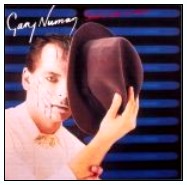
"She’s Got Claws" is a 1981 song by Gary Numan. It was the first and only single released from his 1981 album Dance. The song signalled a different musical style for Numan, featuring jazz-influenced saxophone and fretless bass, as well as a new image comprising trilby hat and pinstriped suit, inspired by Humphrey Bogart and Howard Hughes.

"Bombers" is the second single by Tubeway Army, released in 1978.
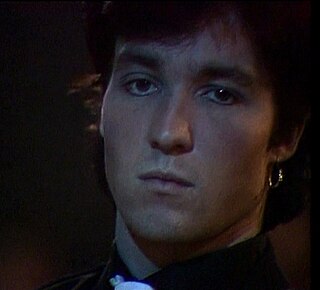
Paul Andrew Gardiner was a British musician who played bass guitar with Gary Numan and Tubeway Army, as well as creating material under his own name.

Living Ornaments '81 is a live album recording of a concert on 28 April 1981 by British musician Gary Numan. It was released as a double CD in 1998. The 28 April 1981 show was the third and last of Numan's 'Farewell Concerts' staged at Wembley Arena. The concert was filmed and released on VHS as Micromusic in April 1982; Living Ornaments '81 is essentially an audio release of the video, albeit one released almost 16 years later.
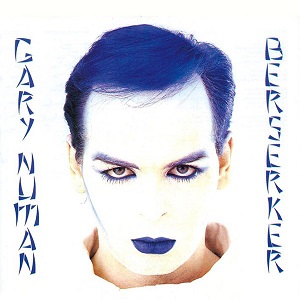
Berserker is the sixth solo studio album by the English new wave musician Gary Numan, released on 9 November 1984, it was his first album to be released under Numan's own record label, Numa Records.

Warriors is the fifth solo studio album by the English new wave musician Gary Numan, released on 16 September 1983 by Beggars Banquet Records, it would be his last studio release on that label.

White Noise is a double live album by British musician Gary Numan and originally released in 1985. The album was reissued as a double CD in 1998 before a remastered version was released in 2003.

The Plan is an archival compilation album of early demo recordings by British new wave band Tubeway Army, released in 1984.

Living Ornaments '79 (1981) is a live album by British musician Gary Numan recorded at the Hammersmith Odeon on 28 September 1979. It was also released as a limited edition box set with Living Ornaments '80 (1981). An expanded (21-track) version was reissued on a double CD in 1998 before a remastered version was again reissued in 2005. The nine tracks of the original Living Ornaments '79 were included on 1979: The Live EPs, a disc available to those who bought the expanded, 2-disc version of The Pleasure Principle from Numan's website in 2009.
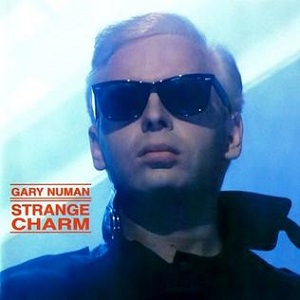
Strange Charm is the eighth solo studio album by the English musician Gary Numan, originally released in November 1986, it was Numan's third release on his self-owned Numa Records label. The album was not released in the United States until 1999 when it was issued in a digitally remastered form with five bonus tracks by Cleopatra Records. In the same year it was also reissued with bonus tracks in the United Kingdom by Eagle Records.

Machine + Soul is the eleventh solo studio album by the English musician Gary Numan, released in 1992. It was a low point, released primarily to help pay off debt, and was the last of his efforts to make his music more radio-friendly. His subsequent work went in the much darker and more industrial direction that would revive his career.
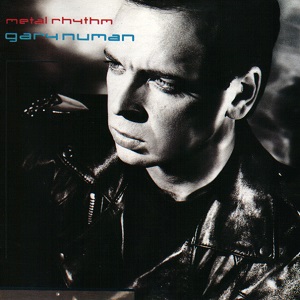
Metal Rhythm is the ninth solo studio album by the English musician Gary Numan, released in September 1988 by I.R.S. Records.

The Skin Mechanic is a live album released by British musician Gary Numan during his stint with IRS Records. The album was recorded in 1988 and released in 1989.
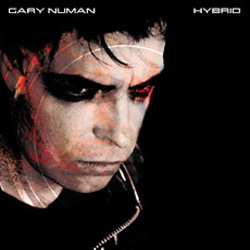
Hybrid is a remix/cover album, consisting of songs by Gary Numan remixed by other artists, covers of Numan's early songs from his first three albums, plus three new tracks created specifically for the album. Hybrid was recorded in autumn of 2002 and released in March 2003 with a collaboration from various industrial rock/heavy rock musicians such as Rico, Sulpher and Alan Moulder. The album includes tracks originally found on the albums Tubeway Army, Replicas, The Pleasure Principle, Telekon, Sacrifice, Exile and Pure.

The following is a comprehensive discography of Gary Numan, a British singer and musician. Numan released his first record in 1978 as part of the outfit Tubeway Army. Initially unsuccessful, the band scored a huge hit in 1979 with the single "Are Friends Electric" and their second album Replicas, both of which reached number one in the UK. Numan then decided to release further recordings under his own name, beginning with the single "Cars" later in 1979. Both this and the subsequent album The Pleasure Principle also reached number one in the UK, and Numan became a leading force in the British electronic music scene. He scored a third number one album in 1980 with Telekon, and more hit singles and albums until the mid 1980s when his popularity waned. Despite this, he has continued to record and tour on a regular basis up to the present day. His 2017 studio album, Savage , entered the UK Albums Chart at no. 2, which was Numan's highest chart peak since 1980. His most recent album, 2021's Intruder, also entered the UK charts at no. 2.

Isolate – The Numa Years is a compilation album by Gary Numan. It was released in March 1992 on CD and cassette and contains tracks issued on his own Numa Records label during the years 1984–1986. The songs are taken from the albums Berserker, The Fury and Strange Charm. The four page insert contains printed lyrics to all the tracks.






















